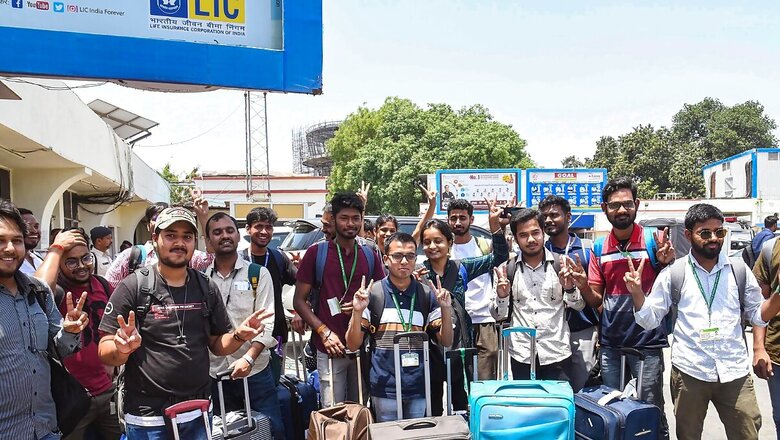
views
With specialised colleges, central universities, NIT, IIIT, government medical schools as well as affordable tuition fee and stay, Manipur has gone from a vibrant education hub to almost a ghost town after witnessing a major student exodus following communal violence over the past two weeks.
More than 2,500 outstation students have reportedly been evacuated from various colleges, universities and medical schools from the state by respective state governments since violence first erupted on May 3. Currently, most educational institutions have announced summer vacations till June.
Khen P Tombing, principal, Rayburn College, said the state has so many central universities specialising in sports, agriculture, liberal arts and commerce offering top-quality courses that students from not just neighbouring towns but even from far-off mega cities come down to study.
Besides, it has a number of government medical and engineering colleges where students from across the country are allotted a seat depending on their rank in entrance exams, he said.
But, he added, a lot of students have been displaced in the violence; not just those from other states, but also from the minority community.
“I am not sure if the students who have left amid violence would ever want to return here even if peace is restored. Nobody has an answer to this question at the moment. As to what will become of its educational prospects will be known only after the Centre takes a call on if students who had already enrolled and were in the middle of completing their courses would be accommodated somewhere else,” said Tombing.
The violence resulted from an ethnic clash between the Hindu Meitei people and Christian tribal Kuki people, leaving 73 people dead.
A faculty member from a central university, who did not wish to be named, said that the psychological impact of the violence and fear on students is too deep. “It may leave them scarred for life. I am worried about the re-opening of the university and what would happen to all those students who have paid up admission fee or are about to complete their courses. It all depends on how the state restores peace,” the faculty member said.
He added that specialised courses and colleges like those in Manipur are hard to find even in many bigger states, that too at an affordable cost. “But, it may never be the same again,” he said.
Students from more than 17 states, including Uttar Pradesh (UP), Maharashtra, Delhi, Jammu and Kashmir, Rajasthan, Himachal Pradesh, West Bengal, Telangana, Andhra Pradesh, Odisha, Arunachal Pradesh, Bihar, Jharkhand, Sikkim, Nagaland, Meghalaya and Tripura, among others, have been rescued.
The state is known for its specialised institutions such as agriculture universities besides engineering, medical and liberal arts colleges offering variety of course combinations. A large number of out-of-state students evacuated were from National Institute of Technology (NIT), Indian Institute of Information Technology (IIIT), Regional Institute of Medical Sciences (RIMS), Jawaharlal Nehru Institute of Medical Sciences (JNIMS), National Sports University (NSU) and Central Agriculture University (CAU), Imphal.
The clashes reached campuses, including Manipur University, which saw a mob destroying quarters and looking for students from the minority community in their hostel rooms on the night of May 3. Similar violence was reported from JNIMS, RIMS and other residential campuses where reports of minority community students being dragged out of their hostel rooms and beaten up have surfaced.
Students could hear gunshots, bombing and houses, vehicles and churches being torched. The fear and horror of what they saw and experienced around has been recounted by many.
“We could hear gunshots from our hostel rooms. We shut the windows but still the sound was too loud and scary. We heard angry mobs getting inside the campus wielding sticks and yelling. It was a nightmare being stuck there. I don’t think I would ever have the strength to go back there or if my parents will let me,” said a student from RIMS, who didn’t wish to be named.
According to educationist and former National Council for Educational Research and Training (NCERT) head JS Rajput, with these recent ethnic clashes in Manipur, the state has gone back to the internal strife it used to witness some 20-30 years ago when people would move out to mega cities to study and work.
“Over the past decade, the state has got better infrastructure facilities, a number of higher education institutions offering specialised courses, which allowed more academics to want to go to the northeastern state for research and teaching. It has a good pool of faculty, which attracts students for specific courses, which may not be available in bigger cities. It will be the state’s biggest loss if it goes back to what it was some decades ago and lose out on the gains it had made in this sector,” he said.


















Comments
0 comment